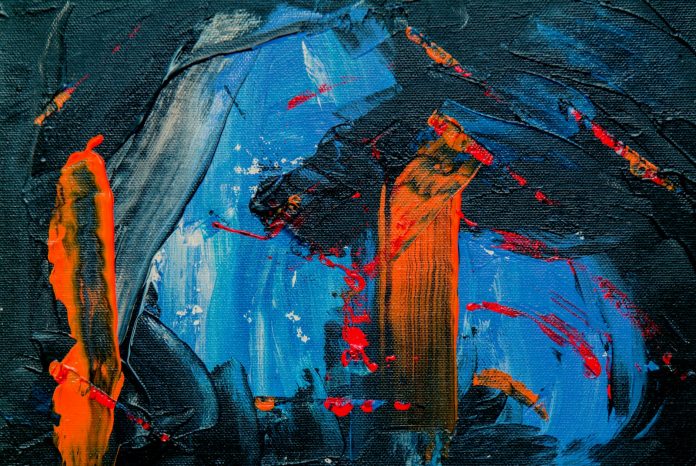
Color serves as one of the most influential elements in visual art. It communicates emotions, defines spatial relationships, and directs the viewer’s attention. It takes center stage in abstract compositions, where recognizable forms are often absent. Without the context of realism, the interplay of hues becomes the primary tool for storytelling and emotional resonance.
Color harmony plays a central role in how abstract works affect the observer. When color combinations are balanced, they guide the eye across the canvas and create unity within the chaos of abstraction. In abstract art paintings, the effective use of color harmony elevates the emotional power and clarity of the piece, enabling deeper engagement of the audience.
Color Harmony and Emotional Tone
Color harmony refers to combinations of hues that are visually pleasing and balanced. These combinations often follow established theory models such as complementary, analogous, and triadic schemes. When used effectively, they shape the tone of the artwork, introducing tension, peace, vibrancy, or subtlety. Abstract art relies on these dynamics to replace representational content with emotional suggestions.
Complementary color schemes, like blue paired with orange, create contrast and can draw attention to focal areas. Analogous colors, such as different shades of green and blue, promote unity and flow. In abstract pieces, both approaches are used to different effects depending on the message or sensation the artist wishes to evoke.
Visual Balance and Viewer Engagement
A harmonious color palette prevents visual overload and enhances the overall balance of an artwork. When contrasting tones are used carefully, they create visual rhythm without chaos. A piece with high harmony often leads the viewer’s eye effortlessly from one section to another, allowing for prolonged observation and reflection.
Abstract art benefits from this balance because it does not rely on recognizable objects or scenes. Viewers are left to interpret the work based on feeling and form, so the guidance provided by color becomes essential. Through color harmony, compositions achieve clarity and emotional accessibility without the need for literal content. This subtle structure is what keeps the viewer connected to the visual experience.
Meaning and Mood Through Color
Colors are not only visual tools; they also carry symbolic and emotional weight. Warm shades like red and yellow stimulate energy and warmth, while cool shades like blue and green often suggest calm, sadness, or introspection. Abstract artists use these associations to consciously or intuitively build meaning within their work. The emotional tone of a painting can be shaped entirely by the choice of palette.
This emotional use of color becomes a central element in abstract art paintings. Since no figures or settings provide context, the viewer relies heavily on color to derive meaning. A well-composed palette can suggest joy, loss, conflict, or serenity without the need for text or image. This capacity to communicate through color alone makes it a vital component of effective artwork.
How Abstract Paintings Enhance a Home’s Interior?
Abstract paintings can greatly enhance a home by bringing depth, character, and a unique visual appeal to the space. Their non-representational nature invites personal interpretation, making them suitable for a variety of interior styles, whether minimalist or eclectic. Through bold use of color, form, and texture, abstract art can serve as a striking focal point, spark meaningful conversation, and evoke a range of emotions. These works of art also offer a way to reflect the homeowner’s personality and taste.
Color harmony is more than a stylistic choice; it is a foundational principle that shapes how art is perceived and felt. It ensures balance, evokes emotion, and guides the viewer through a non-linear visual journey. In abstract art, where form is free and open to interpretation, color provides the structure and soul of the artwork. It transforms a canvas into a captivating visual experience when applied with intention and insight. When placed in a home, abstract art enhances the space by adding depth, personality, and a refined sense of atmosphere.










